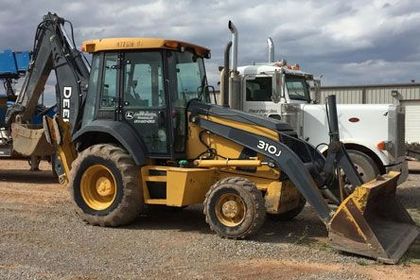Everything About Oil Field Equipment and Pipeline Equipment: Key Insights and Essential Info
Oil field equipment and pipeline systems play a crucial duty in the oil and gas industry. They are essential for the effective extraction and transport of hydrocarbons. Key parts, such as drilling rigs and storage space containers, straight influence functional success. On the other hand, advancements in modern technology pledge to enhance safety and security and performance. Recognizing these aspects is vital for anybody associated with or thinking about this complicated industry, as it sets the stage for deeper expedition of sector practices.

Overview of Oil Field Equipment
As the need for oil remains to grow, comprehending the tools utilized in oil areas becomes increasingly essential. Oil field equipment encompasses a wide variety of equipment and devices vital for exploration, removal, and handling. Secret components include drilling rigs, which are important for reaching oil reservoirs, and production devices, such as separators and pumps, that help with the removal procedure. Superior Rentals Contact. Additionally, storage space tanks play a significant function in holding crude oil prior to transportation. Security devices, consisting of blowout preventers and pressure determines, guarantees operational safety and security and effectiveness. Each item of equipment features cohesively to maximize production and maintain effective operations. Familiarity with this tools is necessary for experts in the industry to assure successful operations and adherence to safety criteria
Kinds Of Drilling Rigs and Their Applications
Drilling rigs work as the backbone of oil extraction procedures, with numerous types developed for particular geological conditions and operational requirements. One of the most typical types consist of rotating exploration rigs, which utilize a turning drill bit to penetrate the planet, and wire device rigs, known for their percussion boring approach. For offshore procedures, jack-up rigs and semi-submersible rigs offer stability and support in aquatic environments. Additionally, directional boring rigs enable operators to drill at angles, getting to deposits that are not up and down accessible. Each gear kind has unique benefits, enhancing performance and safety based on the exploration atmosphere. Picking the suitable rig is crucial for taking full advantage of source removal while decreasing environmental impact and operational expenses.

Necessary Pipeline Equipment and Their Functions
Pipeline facilities is vital for the transport of oil and gas from extraction sites to refining facilities and end-users. Various crucial tools components promote this procedure. Pipelines themselves serve as the main conduits, made to stand up to high pressure and harsh substances. Pump stations are important for maintaining flow by enhancing stress along the pipeline. Shutoffs play a vital function in regulating flow and isolating sections for upkeep. Additionally, installations and ports assure protected joints in between pipeline sections. Monitoring systems, including circulation meters and stress sensing units, are crucial for identifying leakages and enhancing circulation prices. Ultimately, pigging tools is utilized for upkeep and cleansing, guarding pipeline honesty and effectiveness. Together, these parts develop the backbone of a reliable pipeline system.
Advancements and Technologies in Oil and Gas Equipment

Security and Maintenance Practices in the Oil Market
While the oil market has actually made significant strides in technology and efficiency, the significance of durable safety and maintenance methods can not be overemphasized. Reliable security procedures are vital to safeguard workers and the setting, reducing the risk of crashes and spills. Routine examinations and upkeep of devices help identify prospective concerns prior to they rise, guaranteeing functional integrity. Training programs for employees are essential, highlighting the importance of security recognition and emergency response treatments. Additionally, adherence to market regulations and requirements promotes a society of safety. Carrying out innovative surveillance modern technologies can further improve maintenance methods, enabling for real-time evaluations of equipment conditions. Eventually, focusing on safety and maintenance is useful site important to the sustainability and success of the oil market.
Often Asked Questions
What Are the Environmental Impacts of Oil Field Equipment?
The ecological effects of oil field equipment include environment damage, water contamination, and air contamination (Superior Rentals near me). Furthermore, equipment breakdown can bring about spills, detrimentally impacting wild animals and ecosystems, highlighting the requirement for rigid laws and surveillance
Exactly How Is Oil Field Equipment Carried to Remote Locations?
Carrying oil field equipment to remote areas frequently involves specialized automobiles, helicopters, or barges. Logistics firms coordinate paths, making certain tools gets here safely and efficiently, considering surface and ease of access to minimize hold-ups and make best use of performance.
What Regulatory Criteria Govern Oil Field Equipment?
Regulatory standards governing oil field equipment largely include safety and security, environmental security, and functional effectiveness guidelines. Agencies such as OSHA and EPA apply these policies to ensure risk-free methods and reduce ecological influence in oil extraction operations.
What Abilities Are Required to Run Oil Area Equipment?

Just How Do Oil Prices Affect Equipment Need and Use?
Oil prices significantly influence equipment demand and usage. Greater rates usually cause boosted exploration and manufacturing tasks, driving demand for machinery. Conversely, lower prices might cause reduced procedures and lowered need for devices.